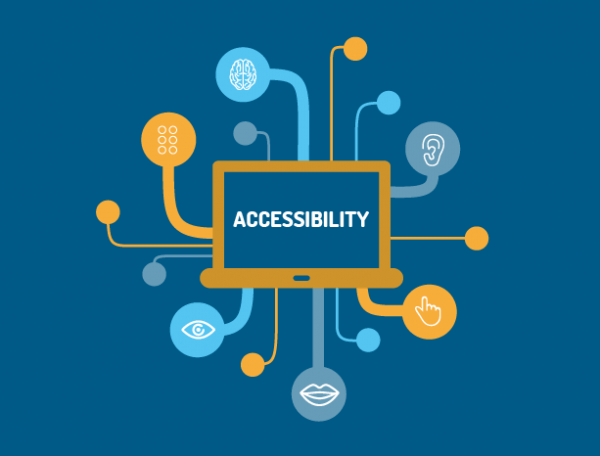Does ATSC Really Stand For ‘Accessible Television Systems Commitment?’
The pieces appear to be coming together for a rather unexpected 3.0 killer app

With more than a dozen important NextGen TV developments around the show floor and in the ATSC booth at the 2023 NAB Show, it was easy to miss what might be an emerging killer app for ATSC 3.0: accessibility.
No one could be faulted for missing it, however, because recognizing this killer app took a bit of sleuthing, the ability to piece things together and a pinch of imagination—a bit like solving a jigsaw puzzle.
The first piece: an OTA- and cable TV-delivered demo in the ATSC booth by NBCUniversal, Comcast, Sinclair, Pearl TV and Dolby. The group teamed up to show the viability of delivering a NextGen TV descriptive audio track and a second language—Spanish for the demo—with superior immersive sound.
The second piece: an info tidbit from ATSC president Madeleine Noland about ongoing work to add portrait-oriented video to the NextGen TV standard.
The third piece was a demonstration by the NextGen TV Korean Alliance in the West Hall where South Korea’s Electronics and Telecommunications Research Institute (ETRI), KBS, Aircode, EQ4aLL and LowaSIS showed a system to insert an AI-driven sign-language avatar in a portrait-oriented picture-in-picture into NextGen TV to inform viewers with hearing impairments of emergency messages.
Consider these developments in the context of some facts about the United States. According to the Center for Disease Control and Prevention, 12 million people 40 years old and older have vision impairments, and 1 million are blind. That’s today. How much higher will these figures get as Baby Boomers age?
According to NIH’s National Institute of Deafness, 15% of Americans 18 years and older—some 37.5 million people—report having some level of hearing impairment. A total of 8.5% of adults 55 to 64 experience a hearing impairment; 25% age 65 to 74; and half of those 75 and older have a disabling hearing loss, it reports.
The professional video industry's #1 source for news, trends and product and tech information. Sign up below.
Finally, an article from the U.S. Census Bureau published in December 2022 reveals about 20% of the U.S. population—some 67.8 million people—speak a language other than English at home—up nearly 300% from 1980. The five most frequently spoken languages at home other than English are: Spanish or Spanish Creole, 41.7 million; Chinese, 3.5 million; Tagalog, 1.8 million; Vietnamese, 1.6 million; and Arabic, 1.3 million.
Taken together with NextGen TV developments, it’s not unreasonable to envision a future in which millions of new and currently underserved television viewers are drawn to broadcast television, either to watch news, sports and entertainment with AI-driven, sign-language “speaking” avatars, or to listen to descriptive audio of on-screen action or second, third or beyond high-quality audio tracks in their native tongues–perhaps translated and spoken by AI algorithms in the cloud or on-prem at minimal expense.
What would attracting millions of new viewers to television do to rate cards and ad revenue? What would it do to demonstrate a deeper commitment to serving the public interest at license renewal?
Does ATSC stand for Accessible Television Systems Commitment? No. But for broadcasters, it most certainly could—and should.
Phil Kurz is a contributing editor to TV Tech. He has written about TV and video technology for more than 30 years and served as editor of three leading industry magazines. He earned a Bachelor of Journalism and a Master’s Degree in Journalism from the University of Missouri-Columbia School of Journalism.

